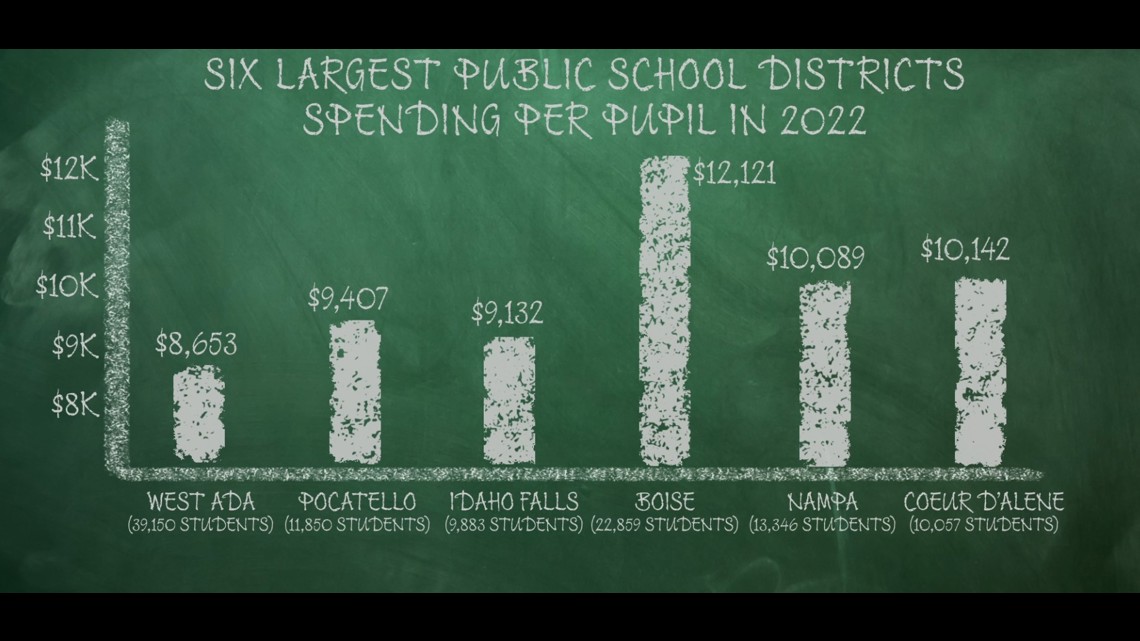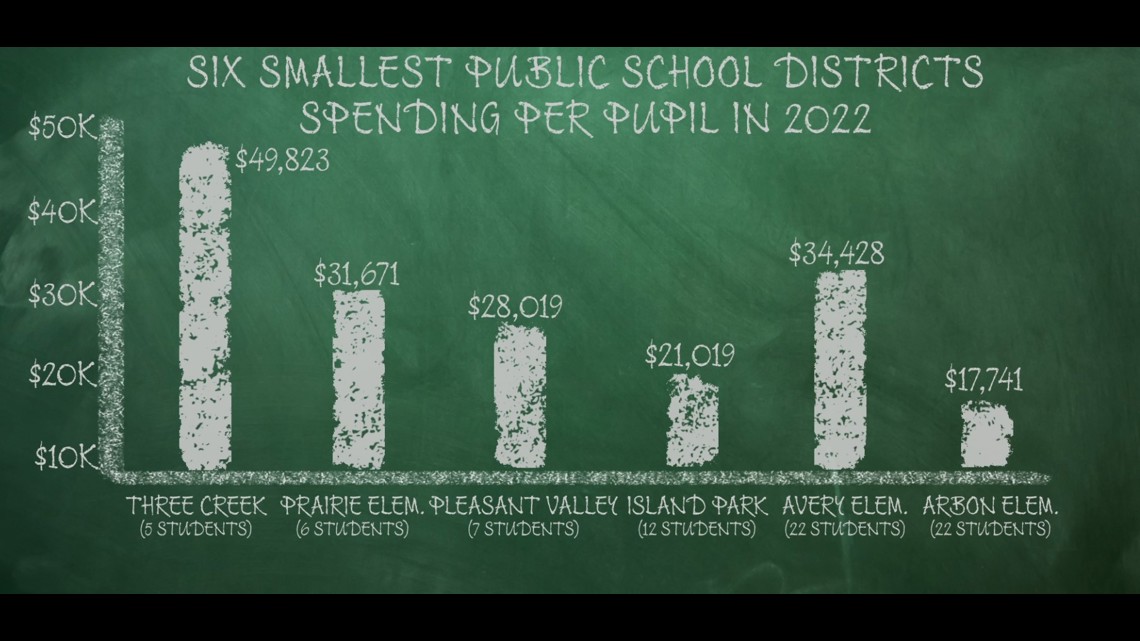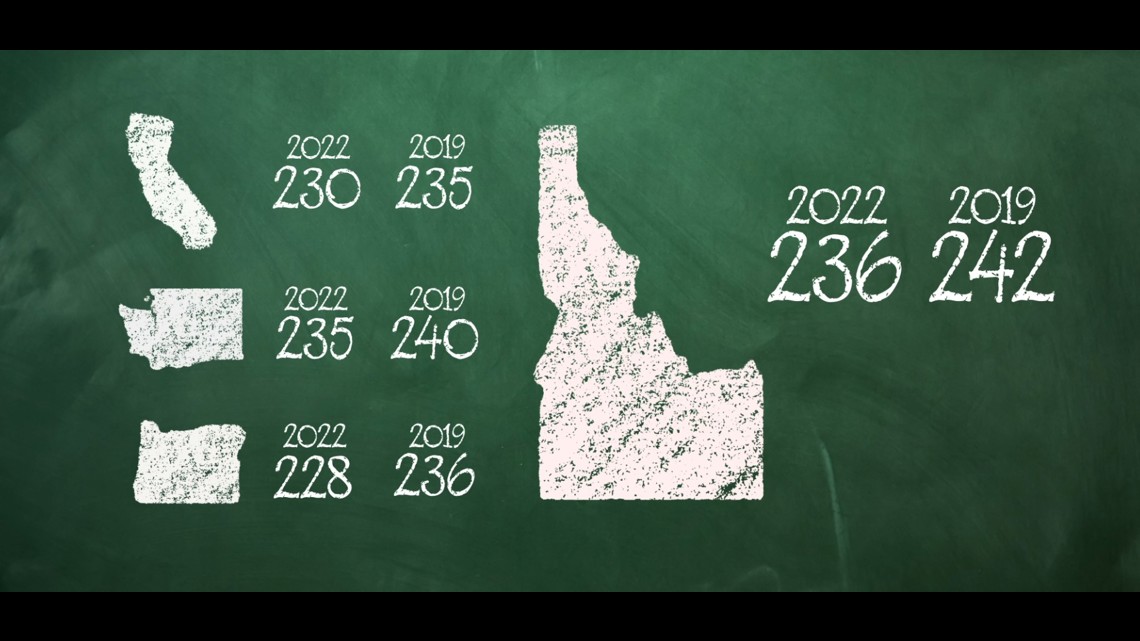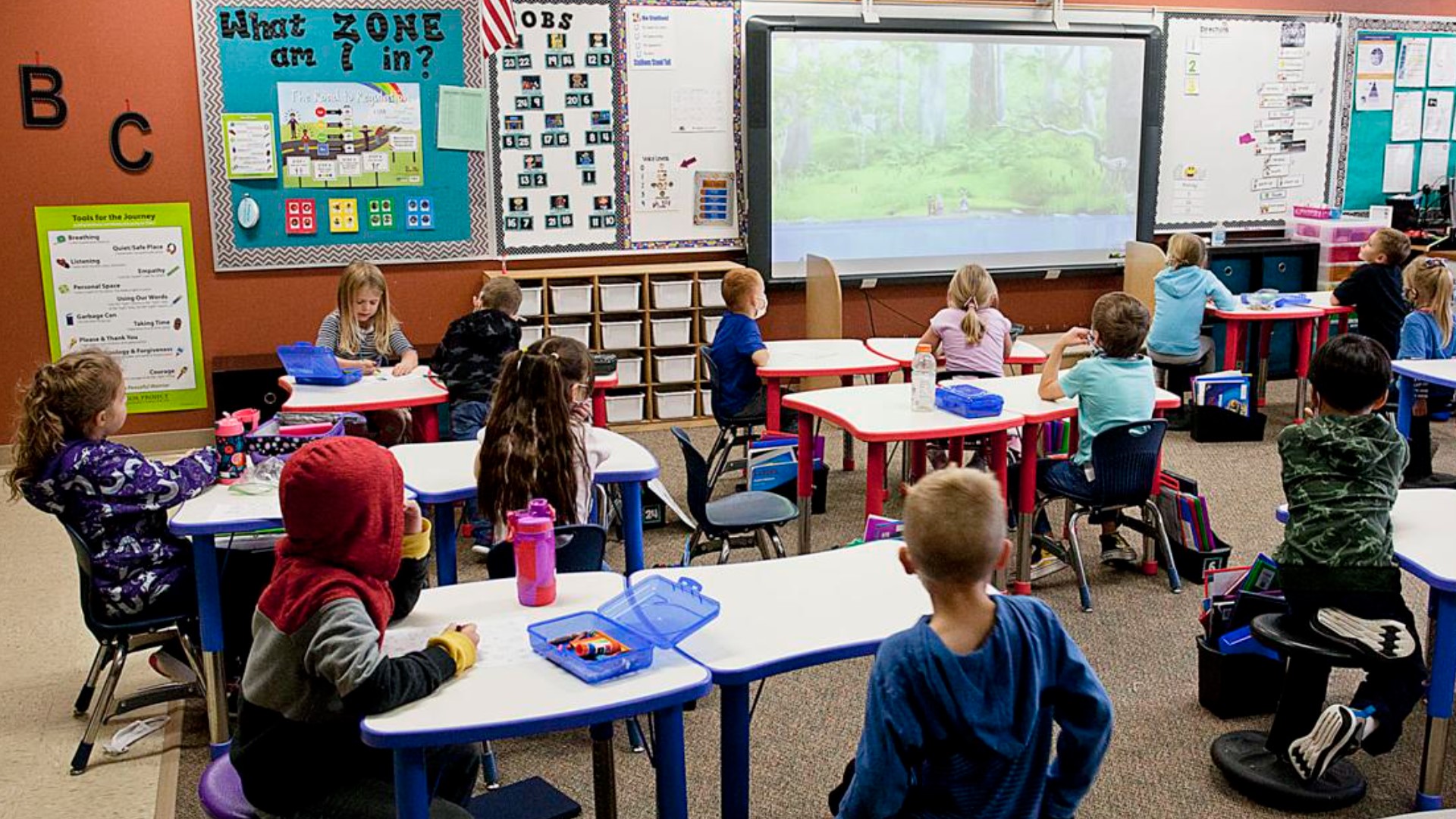BOISE, Idaho — Students in the Treasure Valley returned to the classroom Wednesday.
"Schools are the heart of their community," Idaho Rep. Sonia Galaviz told KTVB. "They are a cornerstone of what happens."
In addition to her legislative position, Galaviz is a teacher in the Boise School District. She's taught for 20 years, she said.
This school year looks different for some, like Caldwell and Nampa School District. Both districts closed schools and reduce staff numbers as a result of receiving less state funding, and low enrollment numbers over the last several years.
2024 is the second year back in the classroom on an attendance-based funding formula. It's also how schools received funding pre-Covid. When Covid hit, the sate switched to enrolment-based funding.
"Our schools are funded by the students that they have and that come to school," Idaho Superintendent of Public Education Debbie Critchfield said about average daily attendance. "But it isn't a straight one-to-one. It is an amount. But that amount is put together through a formula that takes in all of the components of what it takes to run a classroom. And it can be very complex."
Around 60% to 70% of a school district's funding comes from the state. About 10% to 15% comes from local taxes and another 10%-15% of federal funding.
Galaviz said that enrollment-based funding had given schools a significant increase in funds.
"They could have clearer and predictable budgets, because they knew how many kids were enrolled in their districts, so they knew what the funding was going to be," Galaviz said.
In the West Ada School District, Superintendent Dr. Derek Bub said they use state funding for curriculum, building maintenance, and staff compensation.
Galaviz added when it switched back to average daily attendance funding, "We saw 10s of millions of dollars of reductions in our schools across Idaho."
And that average daily attendance funding isn't enough, according to Galaviz.
"No matter who is gone on a daily basis in my classroom, I still have to keep the lights on," Galaviz said. "I still have to be there. I still need all the materials. We still need all the professionals and educators who are meeting the needs of the school at large. And so we don't see a reduction of cost, even though we're being funded less than enrollment."
Idaho spends the least amount of money per student compared to the rest of the country
When it comes to state funding for public education, Idaho as a whole spends the least amount of money per student compared to the other states in the country, according to a July report from Education.org.
"I think it's unfortunate that we're at the bottom all the time, but it's a complex situation," Sherry Dismuke, the Dean of Teacher Education at Boise State University told KTVB.
State Superintendent Critchfield attributes that to the state not collecting "a lot in state taxes."
"That's something that our citizens have agreed to, and that we like, and we send people to the legislature that want to continue to support and defend that," she said. " So, we look at other states, who have a higher tax rate, and just handle their budgets differently. And certainly, they have more dollars to send out. But then when we look at the fact that Idaho has prioritized education and takes the biggest chunk of all of the revenue coming in and sending that to education, really signals that we do care about it."
What is the district's spending per student in Idaho?
Idaho's six largest public school districts spend anywhere from $8,000 to $12,000 per student, according to data from the State Department of Education.


While Idaho's six smallest public-school districts spend anywhere from $17,000 to $49,000 per student, according to data from the State Department of Education.


But, the spending per student can be deceptive.
"If you take like the Prairie School District, or some of these very small one schoolhouse, it looks like they're spending $20,000 on each student," Galaviz said. "But they also have six kids enrolled in the district, and so when you manipulate that divisor, it gives the appearance that a lot of money is being spent on the student, but in reality, it's the overhead and. Operational costs that it takes to run the whole school district."
School districts ask voters for additional funding by passing levies and bonds. Bonds, thinking buildings, Levies, think operations and staff.
"Across the board, there isn't a community that would tell you it's easy to pass a supplemental levy or a school bond, we're all feeling the pinch, our paycheck doesn't go as far it costs more to go to the grocery store, it costs more to fill up a tank of gas, everyone is feeling that," State Superintendent Critchfield said. "I think across the state, you're going to find people who absolutely support education, but are also voter fatigued and tax fatigued."
Some districts like Caldwell and Nampa, with levies failing to pass, are forced to make budget cuts, letting staff go, and some even closing schools.
"It's never easy to see something beloved as a school close," Nampa Superintendent Dr. Gregg Russell told KTVB on May 30, around the time of the closure announcements.
Nampa blamed a drop in enrollment over the last decade, and Caldwell blamed the funding model changes.
"It's heartbreaking, because you know that it's preventable, you know that there are ways that we can fund that more adequately, get the dollars to where they're needed, that we have an opportunity to look at our funding formula and see if we are addressing the needs," Galaviz said.
Does less funding also mean low test scores?
Each state tests differently for science, math, and reading. So, making comparisons gets tricky.
But, there is one type of test you can compare country-wide, according to Galaviz. Which is The National Assessment of Education Progress, also known as the NAEP Test.
"It's a randomized test," Galaviz said. "They will come in and pick the school district, and they will pick the fourth-grade or eighth-grade classroom. Idaho does really well, at or above the national average for grade level benchmark."
Compared to California, Washington, and Oregon... Idaho tested higher on the NAEP test than those three states. But, all four states showed a slight dip in the NAEP scores. Their scores from 2019, before the pandemic, were slightly higher.


But money isn't the only factor that impacts test scores, experts said.
"So many things that impact those test scores," Dismuke said.
"You have students that are coming from very low-income households to where maybe they haven't had the same support or the same opportunities that a student in a more affluent district has," Galavis added. "You also have learning delays and learning disabilities where they are still required to take the same test. You may have kids that just process slower and need more time but aren't able to get maybe the support that they individually need based on staff or personnel availability. You also have kids that come to us from all over the world that may not be able to access the actual language that the test is in. So, we have kids in Boise from West Africa, Southeast Asia, the Middle East, and they're having to take the same test."
Dismuke also added that a student's motivation to take the test that day can play a role. She also said that these tests are designed for students to have sitting in a classroom. With COVID, many current K-12 students were learning online for a period of time.
" I believe we're back to pre-pandemic scores and still growing," Galaviz said.
State Superintendent Critchfield agreed and said, "We know that there's learning taking place, and that's what we want for every student."

